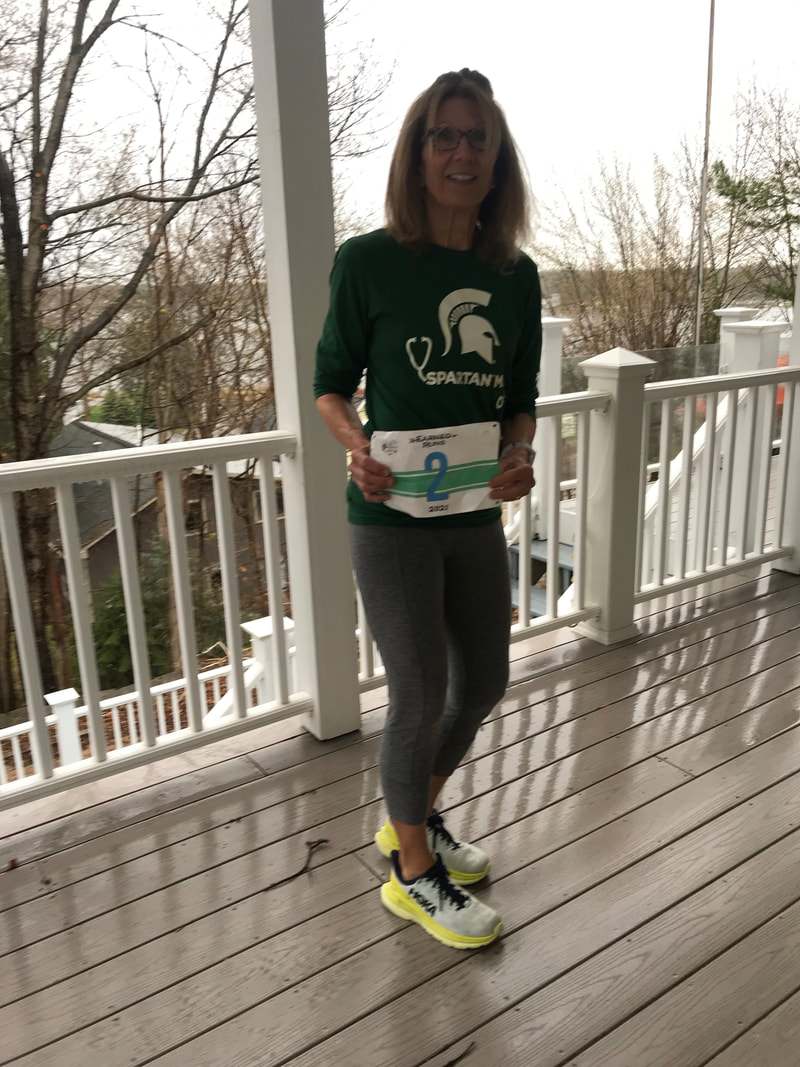BLOG
|
|
PART OF THE RESOURCES* RESTORATION PROJECT Monday’s post discussion about using the "taper" days of a longer race training plan to rest up before an event, like the half marathon some are preparing to run or walk, addresses the issue from one perspective. Another way to prevent fatigue from slowing your race pace or not finishing is to build strength. Not just in striding legs and pumping arms, which generate the vigorous motion propelling you forward, but in the body core which holds you upright and enables efficient running and walking form.
It may be too late to start improving core strength if your goal competition is within a week and this aspect of training has been neglected. However, motivation to regularly perform core strength work going forward can be stimulated if, while competing, you pay attention to the details your fatigue. Overall tiredness, not that which is felt in the front of the legs, but in the lower back and shoulders may be related to poor core strength. Although many equate ‘core’ with ‘abs’, muscles other than those in the abdomen contribute significantly to core strength. Actually, many are located along the posterior aspect of the body and not in the frontal, anterior area in which a ‘six-pack’ would be developed. Core muscles include those of the back, which, as part of the posterior chain, help balance runners’ (and cyclists, walkers) usually quad-dominant strength. The back muscles work to straighten and extend the spine, keeping us upright and allowing us to lean forward slightly by flexing at the ankles, in good running form, rather than bent at the waist. The first step to improving core strength might be to recognize that it’s not tired legs that is preventing you from achieving certain fitness goals but core fatigue. That difficulty in performing some exercise and balance moves may arise from core weakness. Tune in to your body to determine the origins of post-workout exhaustion, Perhaps, you’ll find that your aerobic/metabolic fitness is outstripping your structural fitness, or as Jason Fitzgerald likes to explain it, you haven’t built a chassis strong enough to support your high-powered engine. Completing an entire core strength routine may be too daunting. Start with one or a few exercises. If you notice a change, a benefit to fitness, you may be encouraged to work more. Fitzgerald, in StrengthRunning. has created “The Standard Core Routine” workout with video demonstration. Exercises include: modified bicycle, classic plank, hip bridge, side plank, modified bird dog, and supine leg lift (some call this a reverse or supine plank). Try performing the entire routine once to show yourself you CAN do it. Then, don’t be afraid to pick 2 or 3 to start if the thought of doing all 6 prevents you from doing any. The planks (classic, side and supine) involve the simplest moves (there are no necessary moves!) and are crazy good for the core. If you’d like to start with just ONE exercise that gets the abdominal muscles and back, try performing a Dead Bug. Monica Ksel demonstrates this move with a stability ball (more difficult), and CrossFit Lakeland demos a progression from easy to more difficult. Physical Therapist Robert Gillanders shows beginners how to start, as does BackandNeck.ca There are core strengthening exercises that can be performed standing up. I don’t have experience with these exercises, thus am not able to recommend them from a safety perspective. If you have wrist problems, best to ask for help from a physical therapist, who can evaluate your overall ability to perform specific moves without injury. IF YOU’RE NOT FOLLOWING THE TAPER for an upcoming half marathon and want to build more core strength, you might check out Jason’s other article that demonstrates “11 Plank Exercises That Build Core Strength for Runners”. The workout can work for any fitness enthusiast. One more thought. A car’s strong chassis is what can be its most outwardly attractive feature. Work on core strength improves posture, a body feature that contributes to an athletic appearance. That’s a bonus many would appreciate. RUN & MOVE HAPPY! https://strengthrunning.com/2011/11/dont-let-your-engine-outpace-your-chassis-how-to-build-a-strong-body/ http://strengthrunning.com/2012/01/the-standard-core-routine-video-demonstration/ http://running.competitor.com/2016/04/training/11-plank-exercises-build-core-strength-runners_149016 https://www.mayoclinic.org/healthy-lifestyle/fitness/in-depth/core-exercises/art-20044751 Monica Ksel: Dead Bug with Stability ball https://www.youtube.com/watch?v=bUfeEgFly8w CrossFit Lakeland Dead Bug Progression (easy to difficult) without a stability ball https://www.youtube.com/watch?v=UR_lWjVpfAM Backand Neck.ca Beginner Dead Bug without ball https://www.youtube.com/watch?v=LrvQ5deTBMY Robert Gillanders PT Dead Bug Progress legs only to legs plus arms https://www.youtube.com/watch?v=8NBNM8haZx0 SELF.com Standing Core Exercises by Bari Lieberman https://www.self.com/story/4-standing-core-exercises-that-will-sculpt-your-abs-from-every-angle Check the RESOURCES* page; these core exercises and blog discussion will be posted)
0 Comments
Your comment will be posted after it is approved.
Leave a Reply. |
BRIDGE TO PHYSICAL SELF
Running, walking, and fitness activities enable us to experience our physical selves in a world mostly accessed through use of fingers on a mobile device. AuthorEARNED RUNS is edited and authored by me, runner and founder. In 1978 I began participating in 10K road races before 5Ks were common. I've been a dietitian, practiced and taught clinical pathology, and been involved with research that utilized pathology. I am fascinated with understanding the origins of disease as well as health and longevity. Archives
November 2023
CategoriesNew! Search Box
Earned Runs is now searchable! Check it out...
|


 RSS Feed
RSS Feed